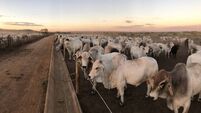Teagasc survey points out cost of recent bad weather
Milk yields in these areas are reduced by as much as 15%.
The Irish apple crop has also been a weather victim, with cooking apples expected to be scarce this autumn, and eating apples either reduced or blemished and unsaleable.
Many apple growers face losses of 70 to 80% of production.
A Teagasc survey last week also indicated that yields of the major cereal crops are expected to be down by around one tonne per hectare. Advisors found that grass growth was still only 50% to 70% of normal on heavier, wetland farms, and grass was still generally scarce.
Damaged land needed reseeding or tining, and dairy and cattle farmers will have to overcome winter feed shortages with extra fertilisation, whole crop grains, selling off surplus animals, or buying feeds.
Reduced yields of second cut silage and maize silage are predicted.
Meanwhile, dairy farmers were still feeding 2.0 to 3.0 kg/cow/day, on average. Some were still housing cows part-time.
Teagasc also reported indications of fertility problems, with up to 30% of cows not holding.
Some cattle farmers had to sell underfinished stock at reduced prices, following 25% poorer growth. Concentrate feeding and part-time housing and feeding of cattle continues in the worst affected areas.
Poorer lamb performance had left some farms with only 50% sold.
Sugar Beet crops have recovered to within one or two weeks of normal, except for later sown crops.
First early potatoes have yielded moderately, and blackleg has hit saleable yield and quality in second earlies (British Queens).
Later sown maincrops were still backward, and under threat from blight and slugs.
A full weather report is available on Teagasc’s www.teagasc.ie website.










